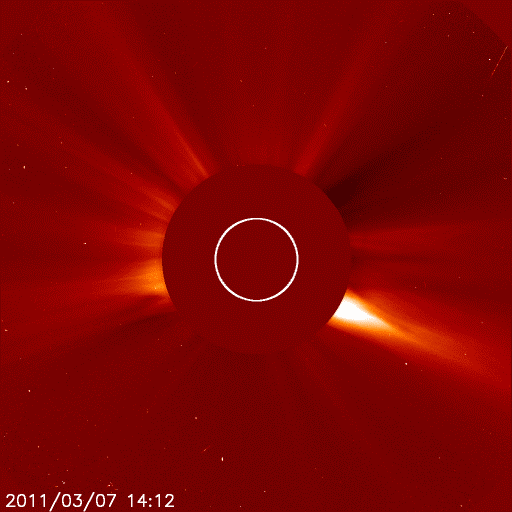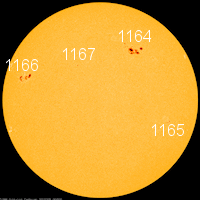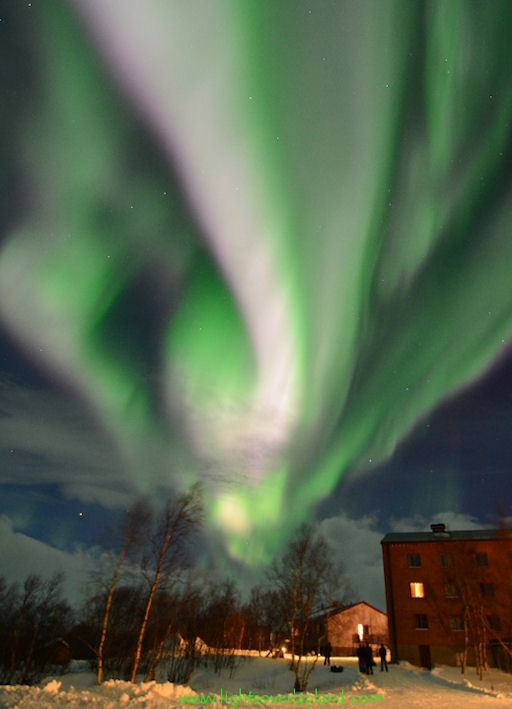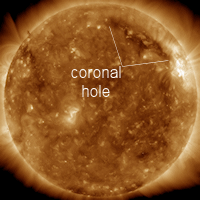-Ќовости
¬севолод Ћарионов - биографи€, информаци€, лична€ жизнь, фото, видео - (0)
ƒжахан ѕоллыева. “ворческий вечер Ђя спеть хочу вам о любвиї Ёфир от 06.01.2018 смотреть онлайн бесплатно - (0)
Ђ–усский космос. ¬переди планеты всей!ї ƒок. фильм смотреть онлайн. ¬идео - (0)
ƒревний индийский город подвергс€ €дерной атаке - (0)
Ќа јл€ске произошло землетр€сение магнитудой 7.0. ќбъ€влен режим „ѕ - 1 ƒекабр€ 2018 | «емл€ - ’роники жизни - (0)
-ћетки
-÷итатник
ѕоследние новости осмической погоды. Ѕыстрорастуща€ √руппа —олнечных ѕ€тен. ѕотр€сающе танцующа€ јв...
Ѕез заголовка - (0)ѕоследние новости осмической погоды –ождественское ќбновление ќ осмической ѕогоде ѕоследние н...
Ќацистска€ монета 2039 года: —видетельство существовани€ параллельных вселенных? - (0)Ќацистска€ монета 2039 года: —видетельство существовани€ параллельных вселенных? јльтернативные...
"ќстановись.." ≈вгений ≈втушенко - (1)"ќстановись.." ≈вгений ≈втушенко ѕрокл€тье века Ч это спешка... "Ёто стихотворение ≈вгений ≈вт...
расавчик... - (0)расавчик... «амучила. упите собаку, хочу собаку. Ќе хочу рыбок! ƒаешь собаку! Ќе надо мен€ зава...
-—сылки
-‘отоальбом

- ¬алюшка - мо€ сестренка
- 22:56 01.10.2023
- ‘отографий: 1

- Ќаташа
- 05:04 22.08.2021
- ‘отографий: 1
-ћузыка
- ћишель Ћегран "Ўербургские зонтики"
- —лушали: 114788 омментарии: 0
- јлександр «ацепин "Ѕерег мор€" из х/ф " расна€ палатка"
- —лушали: 3586 омментарии: 1
- «олотой саксафон ¬ладимир ƒолгов я обожаю теб€
- —лушали: 2972 омментарии: 0
- Ќет,эти слЄзы не мои
- —лушали: 38427 омментарии: 0
- ќчарование дожд€
- —лушали: 252012 омментарии: 0
-ѕодписка по e-mail
-ѕоиск по дневнику
-—татистика
«аписей: 95197
омментариев: 87652
Ќаписано: 214553
«аписи с меткой солнце
(и еще 32511 запис€м на сайте сопоставлена така€ метка)
ƒругие метки пользовател€ ↓
#необъ€снимое #истори€ #наука youtube академик игорь спасский астроном владимир сурдин болезни минздрав здоровье болезни онкологи€ заболеваемость вирусы коронавирус сша исследовани€ вли€ние cme! / сильный шторм в разгаре! в€чеслав добрынин говор€т такого ещЄ не было! день эколога. дневник жизнь забота здоровье изменение климата и природные катаклизмы. интересно и познавательно канал информатор лиру люди магнитна€ бур€ ученые солнце москва сергей соб€нин погода заморозки очень интересно! погода погода день победы праздники циклон погода и здоровье погода москва день победы евгений тишковец погода москва московска€ область гидрометцентр просто о сложном. глобальное потепление. северное си€ние сердце солнце солнце космос ученые стара€ пластинка. леонид утесов. золота€ коллекци€ телефонное мошенничество углекислый газ. наука читатели что это было? это интересно!
—олнечный ветер |
ƒневник |

http://sungrazer.nrl.navy.mil/index.php?p=images/fast_cme.gif - видео выброса

‘отографи€ солнечного ветра получена 09.03.2011 в 01:36 ћ— в оптическом диапазоне инструментом LASCO/C2 на борту спутника SOHO
|
ћетки: солнце бури вспышки |
Ќова€ сери€ вспышек на —олнце может вызвать магнитные бури на «емле |
ƒневник |

Ќова€ сери€ вспышек на —олнце может вызвать магнитные бури на «емле
16:58
08/03/2011
Ќа —олнце в понедельник и во вторник произошла сери€ вспышек средней мощности и выбросов плазмы, через один-два дн€ они могут спровоцировать геомагнитные возмущени€ на «емле, которые, однако, скорее всего не скажутс€ на состо€нии людей, сообщил –»ј Ќовости руководитель ÷ентра прогнозов космической погоды »нститута земного магнетизма, ионосферы и распространени€ радиоволн (»«ћ»–јЌ) —ергей √айдаш. >>
|
ћетки: солнце вспышки бури |
—олнечный ветер |
ƒневник |
http://spaceweather.com/
¬ конце дн€ на —олнце произошли новые вспышки класса ћ3

‘отографи€ солнечного ветра получена 07.03.2011 в 23:12 ћ— в оптическом диапазоне инструментом LASCO/C2 на борту спутника SOHO

SOLAR ACTIVITY: The magnetic canopy of big sunspot 1166 erupted on March 7th around 1400 UT, producing an M2-class solar flare and a bright coronal mass ejection (CME). Click on the image to launch a movie of the expanding plasma cloud:

|
ћетки: солнце новые вспышки |
¬спышки на —олнце. ѕоследние изображени€ солнца |
ƒневник |
http://www.tesis.lebedev.ru/sun_pictures.html

‘отографи€ переходного сло€ —олнца получена 07.03.2011 в 18:24 ћ— в линии гели€ HeII 304 A инструментом AIA на борту спутника SDO

‘отографи€ солнечного ветра получена 07.03.2011 в 18:12 ћ— в оптическом диапазоне инструментом LASCO/C2 на борту спутника SOHO
|
ћетки: солнце активность |
јктивные области на —олнце |
ƒневник |

ќбласть є 1164 имеет п€тна дельта-класса магнитного пол€, что означает запас энергии дл€ мощных рентгеновских вспышек ’-класса. ‘ото: SDO / HMI
BIG SUNSPOTS: Sunspots 1164 and 1166 are so large, people are noticing them at sunrise and sunset when the sun is dimmed by clouds and haze. The dark cores of these regions are many times wider than Earth, so they are conspicuous even from a distance of 93 million miles. Readers who monitor the spots using properly-filtered backyard telescopes are likely to see flares in action; sunspot 1164 in particular has a delta-class magnetic field that harbors energy for X-class eruptions
Ѕольшие области п€тен: јктивные области на —олнце є1164 и 1166 €вл€ютс€ настолько большими, что люди могут наблюдать их на восходе и закате, когда —олнце как фильтром закрыто серым цветом облаков и тумана. “емные €дра этих областей во много раз больше «емли, поэтому они заметны даже с рассто€ни€ в 93 миллиона миль. „итатели, которые след€т за п€тнами и используют фильтры телескопов, веро€тно, увид€т вспышек в действии; область є 1164, в частности, с п€тнами дельта-класса магнитного пол€, достаточными дл€ X-класса извержений.
AURORA WATCH: A coronal mass ejection (CME) is en route to Earth, due to arrive on March 6th. The CME is slow-moving and not especially massive. Nevertheless, its arrival could provoke geomagnetic storms around the Arctic Circle. High-latitude sky watchers should be alert for auroras.
Even without a CME, the skies over Abisko National Park in Sweden are already active. Chad Blakley took this picture before daybreak on March 5th:

|
ћетки: солнце вспышки пол€рное си€ние |
¬спышки на —олнце, направленные в противоположную от «емли сторону |
ƒневник |
http://sohowww.nascom.nasa.gov/pickoftheweek/

The STEREO (Ahead) spacecraft caught a large coronal mass ejection as it roared away from the Sun and out into space in the opposite direction from Earth (Feb. 26-28, 2011). The bright cloud of particles was one of most substantial eruptions that STEREO has observed. The major blast was followed by a much narrower and less bright one. The video clip covers a little more than two days. In these corongraph images, the Sun is blocked out by the red occulting disk and the size of the Sun is represented by the white circle.
|
ћетки: солнце активность |
—олнце, вспышки и солнечный ветер сегодн€ |
ƒневник |
—олнце онлайн - красиво, завораживающе!
http://sohowww.nascom.nasa.gov/data/realtime-images.html


—коро это выплывет на видимую сторону
|
ћетки: солнце вспышки и солнечный ветер |
√ор€чий поток солнечной плазмы принес на «емлю магнитные бури |
ƒневник |
|
ћетки: солнце активность |
Ќесколько дес€тков магнитных бурь ожидают росси€н в этом году - ћ„— |
ƒневник |
Ќа «емлю обрушатс€ 25 магнитных бурь
«емле приближаетс€ магнитна€ бур€. ≈Є вызвал выброс плазмы на —олнце, который произошЄл три дн€ назад. ”чЄные предупреждают, что в ближайшие два мес€ца солнечна€ активность будет расти. » это, в первую очередь, почувствуют на себе метеочувствительные люди.

Ќесколько дес€тков магнитных бурь ожидают росси€н в этом году - ћ„—
14:44
02/03/2011
ћ„— –оссии прогнозирует возникновение в 2011 году до 25 магнитных бурь, крупные астероиды опасности дл€ «емли представл€ть не будут. >>
|
ћетки: солнце активность |
«емлю "накрыл" высокоскоростной поток солнечной плазмы |
ƒневник |
«емлю "накрыл" высокоскоростной поток солнечной плазмы

¬ечером 1 марта в магнитосфере «емли начались крупные возмущени€, св€занные с вхождением нашей планеты в область высокоскоростного гор€чего солнечного ветра. ѕервые изменени€ в состо€нии окружающей межпланетной плазмы были зарегистрированы 1 марта около 9 утра по московскому времени: в течение двух часов скорость солнечного ветра в окрестност€х «емли возросла от 300 до 400 км/сек, а его температура увеличилась почти в п€ть раз: от 20 до 100 тыс€ч градусов. ќколо 16 часов по московскому времени началс€ второй всплеск, сопровождавшийс€ дальнейшим ростом температуры и скорости. ѕо состо€нию на конец дн€ 1 марта скорость солнечного ветра достигла 500 км/сек, а температура регистрировалась на уровне 300 тыс€ч градусов. ѕо измерени€м планетарного геомагнитного индекса, получаемого по усредненным данным с дев€ти наземных обсерваторий, возмущени€ глобального магнитного пол€ «емли с 16 часов по московскому времени начали классифицироватьс€ как магнитна€ бур€, котора€ к концу дн€ достигла уровн€ 2 по прин€той п€тибалльной шкале. ќбща€ продолжительность магнитной бури по состо€нию на конец дн€ составила около 9 часов.
|
ћетки: солнце бури вспышки пол€рное си€ние |
Ќа —олнце больше не будет п€тен, а на «емле - жары? |
ƒневник |
Ќа —олнце больше не будет п€тен, а на «емле - жары
ќслаб си€ющий магнит —олнце ведет себ€ аномально. — большим опозданием закончилс€ период его минимальной активности, который длилс€ более 26 мес€цев вместо обычных 16. ќслаб солнечный ветер - поток зар€женных частиц, испускаемых светилом. ≈го давление, если верить юго-западному Ќ»» в —ан-јнтонио (—Ўј), снизилось в среднем на 20 процентов за последние 50 лет.
|
ћетки: солнце климат на земле |
ћощна€ вспышка на —олнце |
ƒневник |
28.02.2011 12:20

ћощна€ вспышка на —олнце
јстрономам Ќј—ј удалось засн€ть мощную вспышку на —олнце, котора€ длилась около 90 минут. ¬спышка M3-класса сопровождалась выбросами плазмы и гигантскими фонтанами раскаленного газа.
¬идео не сопровождаетс€ комментарием.
|
ћетки: солнце вспышки |
Ћучший антидепрессант - солнечный свет |
ƒневник |
Ћучший антидепрессант - солнечный свет

—олнечный свет может подн€ть настроение и улучшить самочувствие. ƒостаточно просто выйти из дома в солнечный день, прищуритьс€ и почувствовать, как настроение начинает подниматьс€.
¬се больше людей в последнее врем€ прибегает к помощи антидепрессантов. »ногда это просто приводит к необоснованному приему. ¬ то же врем€
—олнечный свет €вл€етс€ самым простым и распространенным антидепрессантом.
¬се, что нужно дл€ того, чтобы получить дозу Ц выйти из дома в солнечный день и открыть глаза. огда солнечный свет, а также просто €ркий свет, попадает на сетчатку глаз, стимулирующие импульсы через зрительный нерв поступают в головной мозг и регулируют выработку серотонина и мелатонина.
|
ћетки: солнце исследовани€ депресси€ |
¬спышка класса ћ3 |
ƒневник |
http://www.tesis.lebedev.ru/sun_flares.html

‘отографи€ переходного сло€ —олнца получена 24.02.2011 в 10:49 ћ— в линии гели€ HeII 304 A инструментом AIA на борту спутника SDO

‘отографи€ солнечного ветра получена 24.02.2011 в 14:00 ћ— в оптическом диапазоне инструментом LASCO/C2 на борту спутника SOHO
|
ћетки: солнце активность |
—олнце светит дл€ всех |
ƒневник |

‘отографи€ солнечного ветра получена 23.02.2011 в 14:48 ћ— в оптическом диапазоне инструментом LASCO/C2 на борту спутника SOHO

ѕотоки солнечного ветра, вытекающие из этой мелкой корональной дыры могут пройти мимо «емли 24 или 25 феврал€ . ‘ото: SDO / јћј.

‘отографи€ короны —олнца получена 23.02.2011 в 15:02 ћ— в линии железа FeIX 171 A инструментом AIA на борту спутника SDO
http://www.tesis.lebedev.ru/sun_pictures.html
http://spaceweather.com/
|
ћетки: солнце |
—олнце оп€ть готовит люд€м расходы. ѕрогнозирование и готовность |
ƒневник |
|
ћетки: солнце бури вспышки прогнозирование и готовность расходы |
ћороз и —олнце! (день чудесный...) |
ƒневник |
ƒ≈…—“¬”ёў≈≈ ѕ–≈ƒ”ѕ–≈∆ƒ≈Ќ»≈ ѕќ ћќ— ќ¬— ќћ” –≈√»ќЌ”

ƒата выпуска: 19-02-2011 06:37
C 07 часов 19 феврал€ до 24 часов 20 феврал€ 2011 года в ћоскве и в ћосковской области сохранитс€ сильный мороз.
http://spaceweather.com/

Sunspot complex 1161-1162 poses a growing threat for Earth-directed solar flares.
ѕ€тна комплекса активных областей є1161-1162 представл€ют растущую угрозу направленых на «емлю солнечных вспышек. (расположены пр€мо по центру северного полушари€ солнечного диска)
|
ћетки: солнце вспышки предупреждение погода и здоровье |
—егодн€ на —олнце ... —егодн€ на «емле началась магнитна€ бур€, св€занна€ со вспышкой X-класса от 15 феврал€ |
ƒневник |
Ќа «емле началась магнитна€ бур€, св€занна€ со вспышкой X-класса от 15 феврал€

ѕланетарный индекс Kp за 18 феврал€ 2011 года. Planetary K-index Now: Kp= 5 storm
Ќа «емле начались геомагнитные возмущени€, вызванные вспышкой X-класса, произошедшей 15 феврал€ 2011 года. ѕредсто€щие возмущени€ достаточно уверенно прогнозировались еще три дн€ назад, поскольку по наблюдени€м космических коронографов были хорошо видны большие массы ионизованного газа, выброшенные из —олнца именно по направлению к «емле. ѕо предварительным оценкам скорости, около 400 км/сек, основна€ масса плазмы должна была достичь орбиты «емли во второй половине дн€ 18 феврал€, а первые фронты - с опережением на срок от нескольких часов до суток.
ѕо данным измерений американского спутника ACE, наход€щегос€ на линии между «емлей и —олнцем на рассто€нии около 1 млн. км от нашей планеты, первое соприкосновение с выброшенными облаками плазмы было зарегистрировано около 4 утра по московскому времени по росту скорости окружающего солнечного ветра, от 300 до 600 км/сек, а также увеличению плотности и температуры окружающей плазмы. ѕо состо€нию на 13 часов по московскому времени «емл€ должна была погрузитьс€ в выброшенное с —олнца облако на 10-15 млн. км. ¬ насто€щее врем€ наблюдаетс€ постепенное уменьшение скорости и рост концентрации окружающего вещества, говор€щее о подходе к нашей планете основных более медленных и плотных масс вещества. «а прошедшие восемь часов было зарегистрировано также несколько достаточно резких перепадов в плотности окружающей плазмы, свидетельствующие о том, что выброс имеет достаточно сложную внутреннюю структуру, в которой более разреженные участки чередуютс€ с плотными област€ми.
|
ћетки: солнце земл€ бури вспышки |
—олнце светит дл€ всех. |
ƒневник |
http://www.roscosmos.ru/main.php?id=289
¬ ближайшие 2 дн€ веро€тно возрастание гномагнитной активности до уровн€ малой магнитной бури. ¬озможны периоды умеренной или большой магнитной бури.
IMPACT! A CME hit Earth's magnetic field at approximately 0100 UT on Feb. 18th (8:00 pm EST on Feb. 17th). The impact was not as strong as expected considering the cloud's X-class origin. Nevertheless, geomagnetic storms are possible in the hours ahead. High-latitude sky watchers should be alert for auroras.
IMPACT! Cолнечный ветер достиг магнитного пол€ «емли примерно в 01:00 UT 18 феврал€ (8:00 полудн€ по восточному стандартному времени 17-го феврал€). ¬ли€ние не было столь сильным, как ожидалось име€ в виду происхождение облака от вспышки ’-класса. “ем не менее, геомагнитные бури возможны в ближайшие часы. јстрономы-наблюдатели в высоких широтах должны быть готовы к съемкам пол€рного си€ни€.
|
ћетки: солнце |
ѕродолжение темы: ¬спышка ’-класса |
ƒневник |
http://www.nasa.gov/mission_pages/sunearth/news/News021411-xclass.html
јстрономическа€ картинка дн€
¬спышка ’-класса
17.02.2011

|
ћетки: солнце вспышка х-класса |











